Around 20% of the world’s population can read music (Source: The Guardian). Reading sheet music is like learning a new language. It requires not only understanding of the notes, but also rhythm, dynamics, and style. The ability to read music opens up the opportunity to play nearly any piece of music in the world. Don’t be daunted, beginner pianists! Starting with a simple piano song and learning the basics of music theory can make a world of difference.
Our starter guide to understanding the basics of how to read piano music notes will get you making beautiful music in no time.🌈
The very Basics for reading piano notes for beginners
Don’t worry, you’re about to embark on an exciting journey of musical discovery! As a beginning pianist, you might feel a bit overwhelmed by the array of notes and symbols on a piece of sheet music. But rest assured, understanding music notation is just a matter of breaking down the elements and practicing.🎹
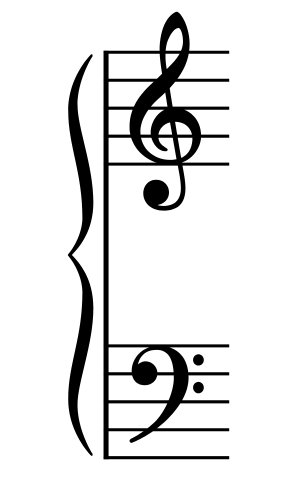
The staff
Firstly, let’s talk about the staff. This is the set of five horizontal lines where music is written. Each line and space represents a different note. From bottom to top, the lines represent E, G, B, D, and F. Remember it with the phrase “Every Good Boy Does Fine”. The spaces, from bottom to top, represent F, A, C, and E, which spells out “FACE”.
The keys
Next, you’ll see some odd-looking symbols at the beginning of each line. These are called clefs. The two most common clefs are the Treble Clef (G Clef) and the Bass Clef (F Clef). As a pianist, you’ll need to familiarize yourself with both.
The notes
Now, look at those little oval shapes on the staff. Those are the notes. The position of a note on the staff corresponds to a specific piano key. Notes can be filled (black) or open (white), and this difference affects how long the note is held.
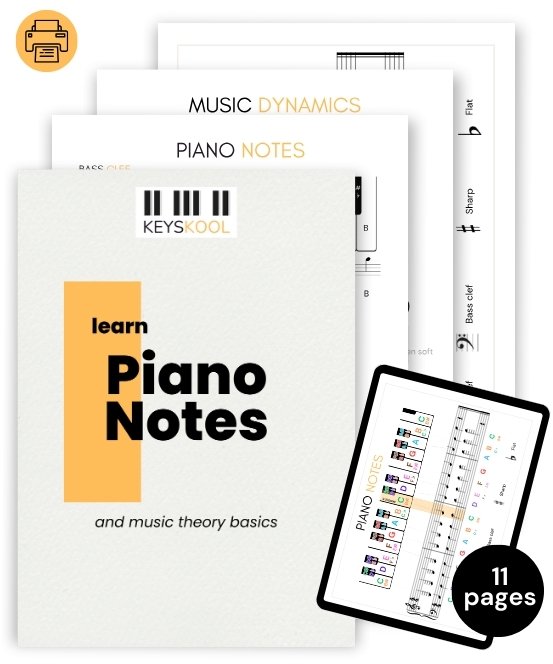
Printable Theory of piano music PDF with beautiful charts
Decoding music sheets and learning music theory made easy with our beautiful charts.
Understanding Duration and Rests
When it comes to reading piano sheet music, understanding the duration of notes and rests is crucial. This helps you to accurately play the rhythm of the piece, and adds life and character to your performance.
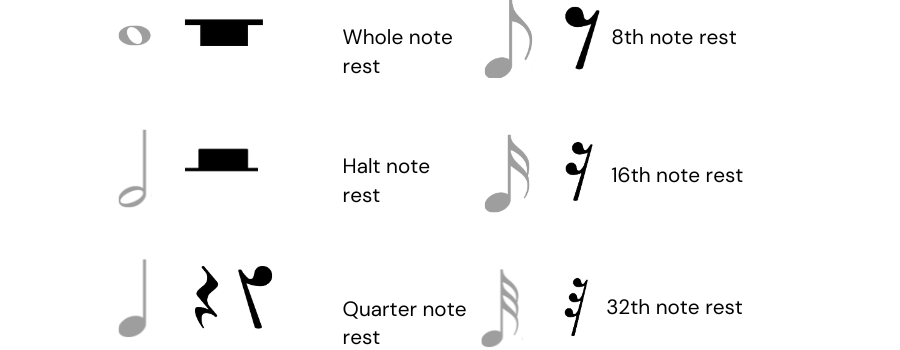
Note Duration
Each note you see on the sheet music represents a sound that has a specific length or duration. The shape and style of the note indicate its duration. Here’s a quick guide to help you understand:
- Whole note: Represented by an open note head, a whole note lasts for four beats. You play the note and hold it for the length of four counts.
- Half note: This is shown as an open note head with a stem. It lasts for two beats, half the duration of a whole note.
- Quarter note: This is a filled note head with a stem. It’s played for one beat, which is a quarter of the duration of a whole note.
- Eighth note and Sixteenth note: These notes are played for a half beat and a quarter beat respectively. They are represented by filled note heads with a stem and one or two flags respectively.
Rests
Just as important as the notes are the rests. Rests represent silence in the music, but they are far from being ‘nothing’. They provide space within the music and contribute to its overall rhythm and feel. Rests are counted in the same way as notes. For example, a whole rest means silence for four beats, a half rest for two beats, and so forth.

Understanding Key Signatures and Scales in Piano Music
There’s a whole world of music waiting to be unlocked when you understand key signatures and scales on the piano. Just like learning to read words, understanding these musical ‘sentences’ is a key part of reading piano sheet music. So, let’s dive in and begin unlocking that world together, shall we? 🎵
What are Key Signatures?
When you look at a piece of sheet music, one of the first things you’ll notice (after the clefs, of course) is a collection of sharps or flats at the beginning of each line. This is the key signature. It tells you which notes to play sharp or flat throughout the piece. It’s like a rule for the piece of music you’re about to play.
For example, if you see a sharp on the F line in the key signature, it means you play F sharp instead of F throughout the piece, unless instructed otherwise. A flat on the B line means you play B flat instead of B.
Key signatures help to define the tonality of the piece of music, and they give you a good hint about what to expect in the piece. If you see lots of sharps or flats, you can expect the piece to have a more complex, chromatic sound.
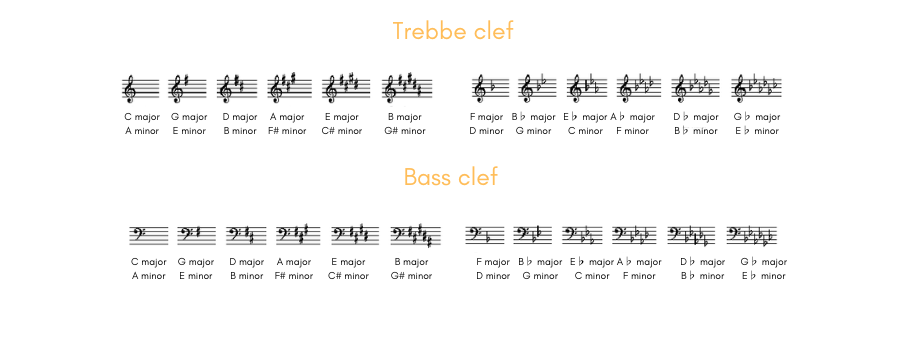
Now, what are Scales?
You can think of scales as the building blocks of music. They are a series of notes, arranged in ascending or descending order, that provide the foundation for a piece of music.
Each scale is associated with a specific key – that’s right, the same keys we just talked about in key signatures. For example, if a piece of music is in the key of C major, it means it uses the notes of the C major scale.
Scales come in various types, the most common being major and minor scales. Major scales have a happy, bright sound, while minor scales sound more somber or serious. Scales can also be chromatic (including all the black and white keys), whole tone (only whole steps), or pentatonic (five notes per octave), among others.
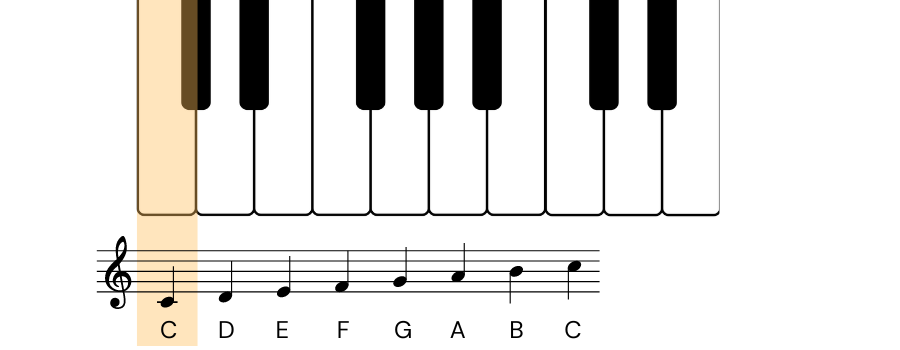
The Role of Key Signatures and Scales in Reading Piano Sheet Music
Understanding key signatures and scales is crucial to reading piano sheet music because it allows you to understand the structure and ‘feel’ of the music before you start playing. Knowing the key signature helps you to anticipate which notes will be sharp or flat. Knowing the scale helps you to understand the melodic and harmonic structure of the piece.
Just like learning to read words, it may take some time to become fluent in reading key signatures and scales. But don’t worry, every pianist starts at the beginning. Keep practicing, stay patient with yourself, and remember to enjoy the process. You’re not just learning to play the notes – you’re learning to speak the language of music, and that’s something truly special.
READ : Music Theory/Fundamentals of Common Practice Music/Notation – Wikibooks.org

Practical Tips for Beginners on how to read piano music notes
Here are some practical tips that can help you enhance your ability to read piano music notes:
Practice Sight Reading Regularly
Sight-reading is the ability to read and play a piece of music you’ve never seen before, and it’s a wonderful skill to build. Start with simple pieces and gradually move to more complex ones. Regular sight-reading practice will significantly improve your note-reading skills.
Use Music Theory Worksheets
Music theory worksheets can help you practice identifying notes, key signatures, and rhythms. They provide a structured way to test and reinforce your knowledge.
Be Patient and Consistent
Learning to read music takes time and patience. It’s important to practice consistently, but don’t rush. Remember, every professional pianist started where you are now.
Enjoy the Journey
Above all, remember to enjoy the journey. Music is a language of emotion and expression. As you learn to read music, you’re unlocking the ability to speak in this beautiful language.
You’re on your way to becoming a fluent reader of music. Keep practicing, stay patient, and remember to enjoy the process.
Happy playing!💕
